The Aquincum Museum’s temporary exhibition commemorates Gyula Hajnóczi, a leading figure in the 20th century history of monument protection in Hungary, on the 100th anniversary of his birth. Interview with the exhibition’s curator, Katalin L. Kurucz.
Who was Gyula Hajnóczi?
A professor of the Budapest University of Technology, corresponding member of the Hungarian Academy of Sciences, a renowned researcher of ancient architecture, an Ybl and Kossuth Prize winning architect, Gyula Hajnóczi was both a technological specialist and a humanities scholar. This is what made his work so special: his ability to view professional questions from multiple angles; what we would today call an ‘interdisciplinary approach’.
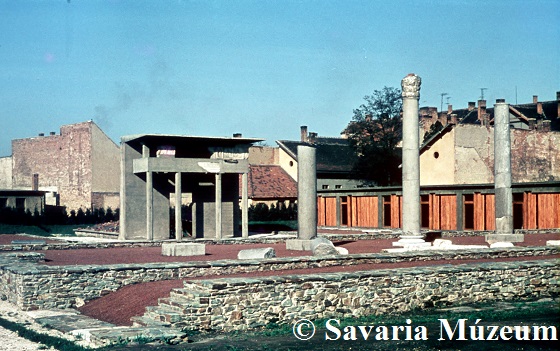
Reconstruction of the Isis temple at Szombathely, 1964 (Photograph by: Tihamér Szentléleky)
His accomplishments in the field of monument conservation in Hungary from the 1950s to the second half of the 1990s are outstanding. These included the last comprehensive conservation programme of the Archaeological Park in Aquincum. Hajnóczi worked not only in Aquincum, but, among others, also in Gorsium, Balácapuszta, and Savaria. The Iseum reconstruction was a unique and ground-breaking accomplishment in its day. It was this project that first brought Hajnóczi professional renown.
What innovations in monument protection did Hajnóczi introduce in Hungary?
Hajnóczi combined the different methods of presentation: the open archaeological park, the protective buildings – which cover various building sections, mosaic floors –, and the reconstruction of certain building parts primarily with a didactic purpose. Speaking of didactics, we must also mention the red and white gravel on the floor of the building sections, which indicate to this day, which areas were fully or partially covered, enclosed respectively; or the ‘red line’ on the walls, which uniformly shows where the original, Roman-period wall ends.
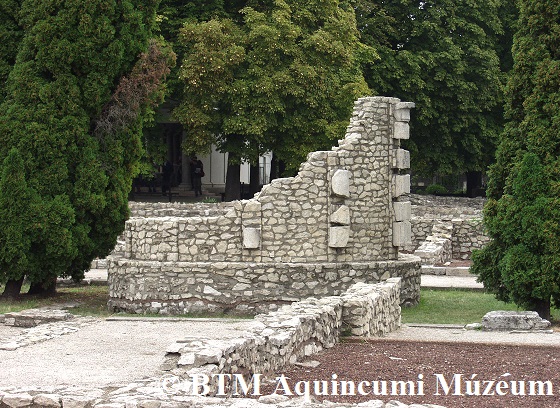
The reconstruction of the Aquincum macellum, with the red line and the gravel indicating the nature of the building parts (Photograph by Péter Komjáthy)
When Hajnóczi envisaged the conservation plan for the Aquincum Archaeological Park, he did not limit himself to 1-metre-tall protective walls above the Roman ruins; he viewed the project through the eyes of a museum specialist. His plans covered, in addition to building reconstructions, the state-of-the-art service and entertainment of visitors. This included areas for rest, promenades, landscaping, an information system, and also a small theatre.
How did Hajnóczi’s work define the current look of Aquincum?
In a fundamental way. In the northern, traditional, part of the Archaeological Park, we still see the work of Hajnóczi. To the south, a new part was established in the new millennium, focusing on education and entertainment, which, although he could not live to see it, reflects the spirit and museological eye of Hajnóczi.
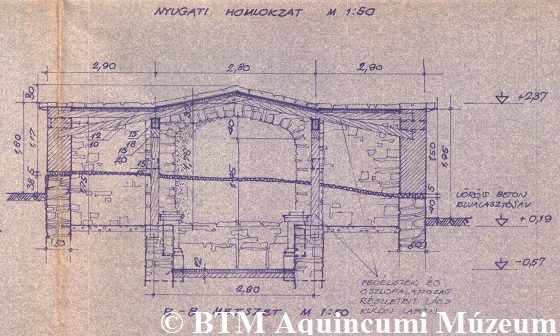
Blueprint for the reconstruction of the Victorinus mithraeum
As Bálint Kuzsinszky, the first director of the museum, established the Aquincum Museum’s scientific reputation internationally, we might say that in terms of monument conservation, the founder in Aquincum was Gyula Hajnóczi, in close cooperation with then-director of the museum, Klára Póczy.
How do his former colleagues remember Hajnóczi?
Hajnóczi and Póczy would always go back and forth in the archaeological park, the discussions would frequently continue in the kitchen of the Póczy family home in Nyúl Street, then Hajnóczi would return with new plans. I really liked the plan for the Victorinus mithraeum. The House of the Painter and the Symphorus mithraeum reconstructions were a long way in the future. This was the first plan of this kind during my time at the museum. I remember we also talked about how the reconstruction should also accommodate museum classes. What I also liked a lot was the extension plan of the old exhibition building. Hajnóczi incorporated the outdoors carved stone collection and even the chestnut trees in his plan, which would have created a significantly more advanced, larger museum building. Hajnóczi always kept bringing new plans, and you could feel that this was the future, but sadly he could not live to see it become reality. Although there are currently no plans now for the Victorinus mithraeum’s reconstruction, the planning stage for the extension project of the old exhibition building is underway. 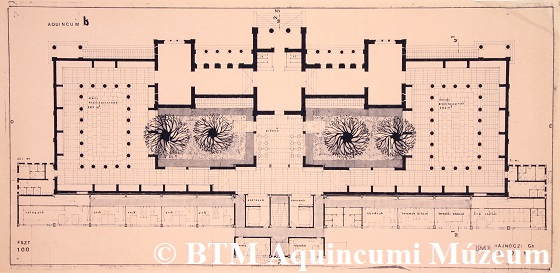
Hajnóczi’s plan for expanding the old exhibition building
“In his work and personal relations he was moderate and reserved. In spite of this, or perhaps as a result, the overwhelming majority of his colleagues loved and respected him” – wrote his colleague Gyula Istvánffy. Hajnóczi was venerable and at the same time also genial. At Aquincum, during the Interstudex camp – a joint project of the Budapest University of Technology and the Aquincum Museum for the archaeological excavation of the western part of the Aquincum Civil Town – Hajnóczi too joined Klára Póczy and the young university students in the digging. He not only led as a wise professor, but also took part in the physical labour. 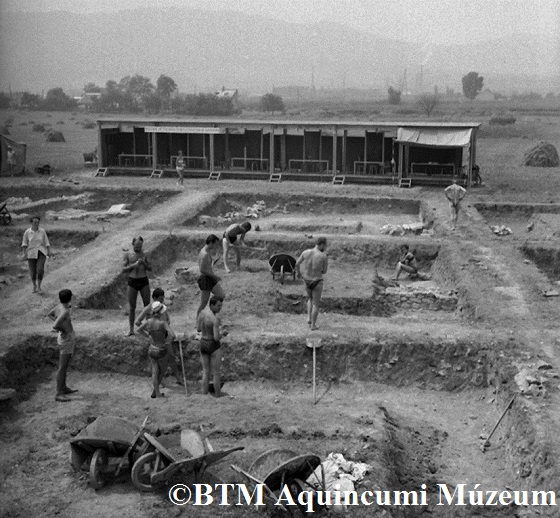
Excavation in Aquincum during the Interstudex (International Student Excavation) archaeological camp, 1966-1972
At the Aquincum Museum Gyula Hajnóczi is commemorated by a plaque on the building named after him.
The Hajnóczi_100 exhibition can be seen at the Dirke building until 31 October 2020.
Zoltán Quittner
Click here to read the previous entries of the Aquincum Museum’s blog.


